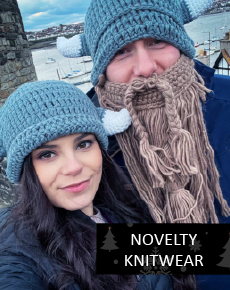Display
Display swords and daggers are predominantly designed to look good. They tend to be ornately decorated and in most cases they will have shiny, maintenance-free stainless steel blades. They are not usually historically accurate and are not designed to be used in combat. They are also usually suitable for ceremonial use and fancy dress.
Battle Re-enactment
Swords designed for battle re-enactment are designed for the rigours of the re-enactment battlefield and conform to the safety requirements of most re-enactment societies. They feature tempered high-carbon steel blades with 3mm edges and rounded tips. They usually feature peened pommels and period-accurate fittings. The thicker blades on battle re-enactment swords make them heavier but more durable than real swords of the period.
Please remember that a sword is a tool and is not indestructible. Over time and with prolonged use, fittings can become loose and blades can break - just as their historical counterparts did.
Living History
Swords and daggers designed for Living History are made as accurate representations or replicas of period pieces. They usually feature tempered high-carbon steel blades with sharp or sharpenable edges. They usually feature peened pommels but in some cases will have historically accurate screw pommels. They feature historically accurate fittings and materials and are suitable for show and tell and film work. They are designed as functional weapons, but this does not mean they are indestructible. Like their historical counterparts, blades will break, notch or become damaged if abused or are not maintained properly. For combat use we would recommend Battle Re-enactment or HEMA Sparring swords which are safer and more durable.
Test Cutting
Swords and daggers that are designed for test cutting are designed to function like their historical counterparts. They feature tempered high-carbon steel blades that are either supplied sharp, or can be sharpened. They are suitable for test cutting a variety of objects - typically water bottles, vegetables and tatami mats. Most of the swords designed for test cutting are historically accurate but this is not always the case. If you require it to be historically accurate, make sure it is also labelled as being suitable for Living History.
HEMA Sparring
HEMA Sparring Swords are designed to be used for HEMA combat (specifically full contact sparring). They typically feature 2mm (approx.) edges and rolled or fattened tips designed to spread the impact of a thrust. Rapiers, feders and (some) sabres also feature flexible blades that are designed to bend upon impact when thrusting. They tend not to be historically accurate but are a good compromise between historical design and their required function. These features are very specific to HEMA “Sparring” swords. HEMA encompasses sparring, drilling and test cutting. In general, any sword that is suitable for Living History, Battle Re-enactment or Stage Combat will be suitable for most HEMA drilling exercises. But flexible blades with fattened tips are a must for sparring.
Please remember that a sword is a tool and is not indestructible. Over time and with prolonged use, fittings can become loose and blades can break – just as their historical counterparts did.
Stage Combat
Swords and daggers that we advise as being suitable for stage combat must be robust enough for blade on blade combat. They feature blunt, high-carbon steel blades with 2-3mm edges and may have fattened or rounded tips. Stage Combat rapiers tend to be light and durable enough for fast and intense fighting. Longswords and single hand swords, owing to the extra mass of the blades, are slower moving and will feel heavier in the hand. We would recommend that you look at the weight and balance points of these swords before purchasing.
Please remember that a sword is a tool and is not indestructible. Over time and with prolonged use, fittings can become loose and blades can break – just as their historical counterparts did.





